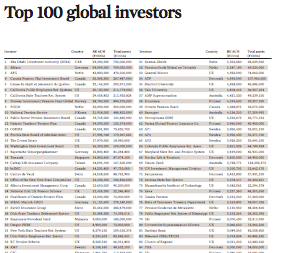The investment arm of the Church of England’s returns last year were boosted by the performance of its real assets portfolios.
The Church Commissioners announced returns of 17.1% on its £7.9bn (€9.2bn) portfolio for 2016, compared with 8.2% for the previous year.
The Commissioner’s relatively recent 0.3% allocation to infrastructure returned 41.3% during 2016, while Timberland retured 24.3%.
Timberland already makes up 4.8% of the overall portfolio and comprises investments in Australia, the UK, and the US.
The properties include two wind farms in Scotland, and Indian sandalwood plantations in Australia which should start delivering sustainable-produced oil for use in the fragrance and pharmaceutical sectors in the late 2020s.
As a whole, the property portfolio, which makes up 23.7% of assets, returned 11.6% for the year, which the Commissioners consider “creditable” in a relatively weak market environment.
The best performer was indirect property, with a 17% return on the fund’s 2.7% allocation; US and European investments all performed well, boosted by US dollar and euro gains against the pound.
Residential – 6.1% of the overall portfolio – made 14.1%, while strategic land – 2.4% of the portfolio – returned 13.8%. Within the latter asset class, local authorities continued to identify land holdings as suitable for residential development, with all pre-existing site allocations continuing to be confirmed in local development plans.
The largest property allocation – 8.8% of the overall portfolio – is in rural let land, which returned 9.5%.
In terms of their tenanted farms, the Commissioners have focused on key areas such as water management, horticulture and agricultural infrastructure.
A solar farm near Carlisle is now onstream, with another in Newport to be constructed during 2017.











